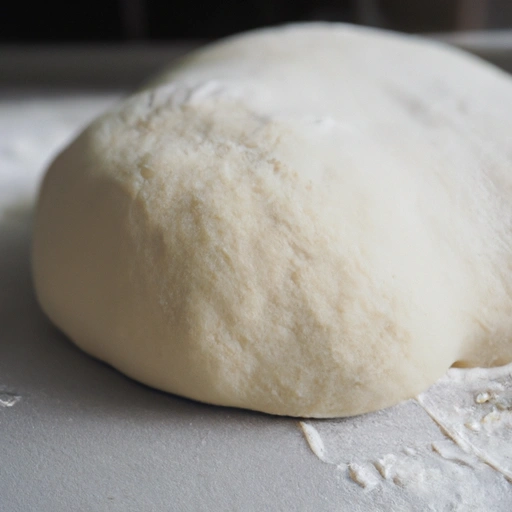Bread Dough
Description

Bread dough is the foundational substance from which various types of bread are baked. It is typically made from a mixture of flour, water, yeast, and salt, though additional ingredients such as sugars, fats, and other flavorings can be added to alter the final product's taste and texture. The process of making bread dough involves combining the ingredients and kneading the mixture to develop gluten, which gives bread its structure and chewiness. The dough is then allowed to rise, or 'proof,' which is when the yeast ferments the sugars in the flour, producing carbon dioxide gas that makes the dough expand and become airy.
Common uses
Bread dough is used to make a wide range of baked goods, including different types of bread such as white, whole wheat, rye, sourdough, and sweet breads. It's also the base for other bakery items like rolls, buns, bagels, pizza crusts, and pastries.
Nutritional value
Calories
One 100g serving of plain bread dough roughly contains about 260 calories (kcal).
Protein
Bread dough typically contains about 7 to 10 grams of protein per 100g, depending on the type of flour used.
Fat
The fat content in bread dough can vary, but it's usually around 1 to 5 grams per 100g. Adding ingredients like oil, butter, or eggs will increase the fat content.
Carbohydrates
Carbohydrates are the primary source of energy in bread dough, with about 50 to 60 grams per 100g serving.
Vitamins
While not a significant source of vitamins, bread dough can contain small amounts of B vitamins, particularly if made with whole grain flours.
Minerals
Bread dough may contain minerals such as iron, selenium, and magnesium, especially when whole grain flours are used.
Health benefits
The dietary fiber in whole grain bread dough supports digestive health, while the protein content contributes to muscle maintenance and repair. The fermentation process can also result in beneficial probiotic-like substances.
Potential risks
Consuming large amounts of bread dough, especially from refined flours, can contribute to weight gain and may affect blood sugar levels. Unbaked bread dough containing yeast can be dangerous if ingested, as it can expand in the stomach and produce alcohol.
Common recipes
Bread dough is used in a myriad of recipes including loaves, baguettes, rolls, flatbreads, pizza, and focaccia.
Cooking methods
Bread dough can be baked, steamed, or fried to create different textures and flavors. Baking is the most common method, typically at temperatures ranging from 350°F (175°C) to 475°F (245°C).
Pairing with other ingredients
Bread dough pairs well with a wide range of ingredients, including herbs like rosemary and thyme, cheeses, meats, and sweet components such as cinnamon and raisins.
Summary
Bread dough is a versatile and essential ingredient in baking that has been a part of human culture for millennia. With its simple base ingredients and complex biochemical processes, it provides a canvas for a multitude of culinary creations, while also offering nutritional benefits when made with whole grains. However, mindful consumption is advised due to potential health impacts of overconsumption and risks associated with raw dough.